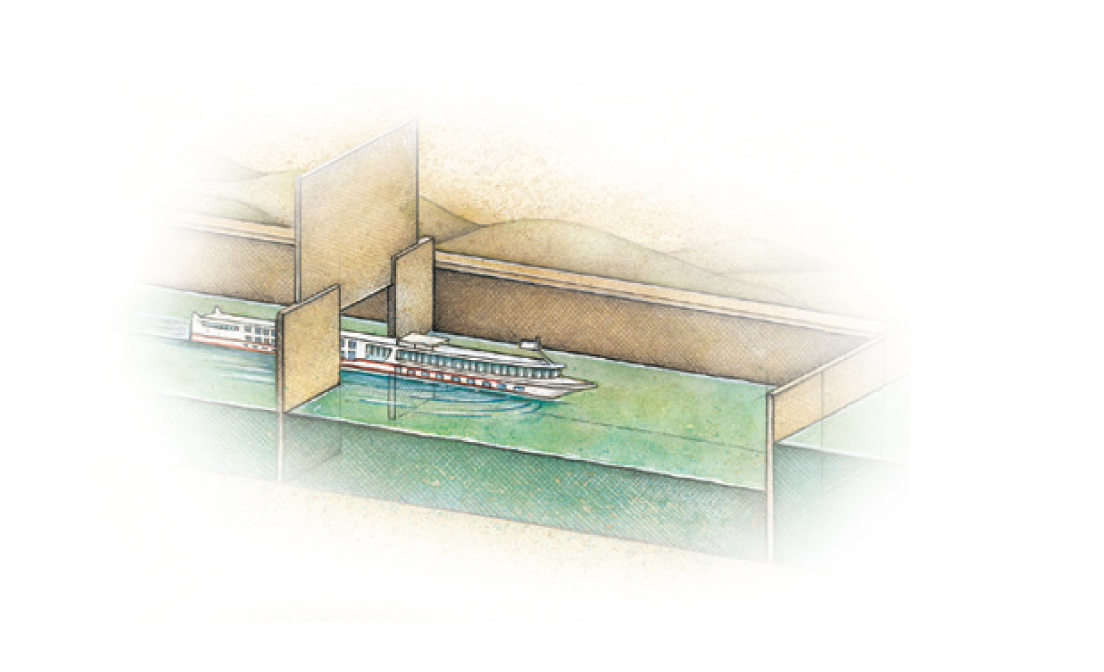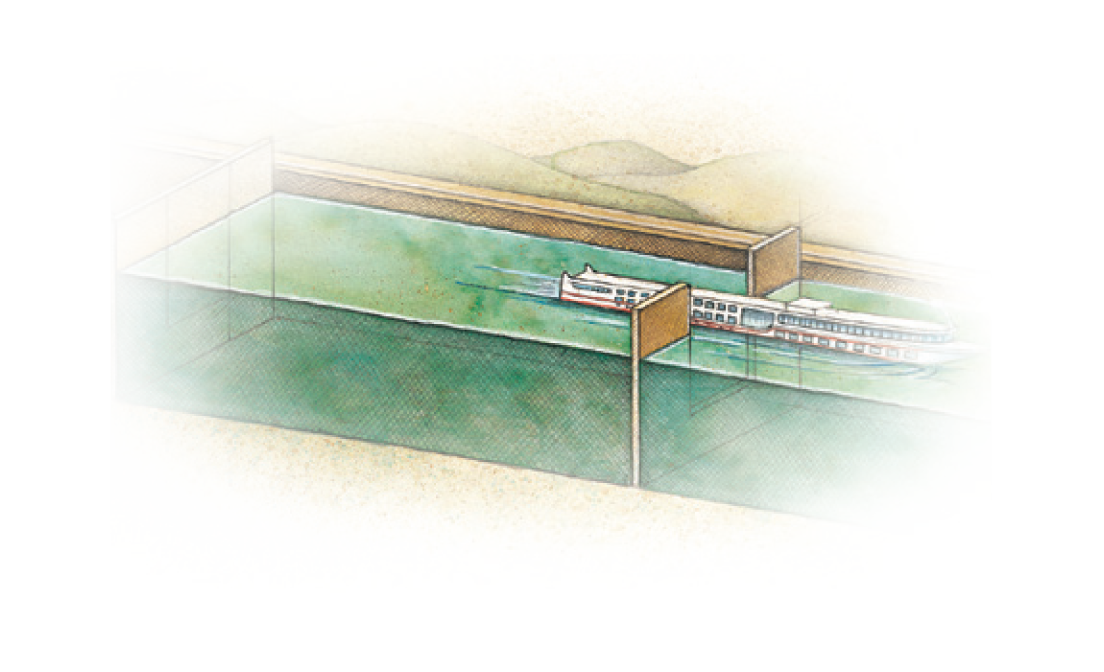River Cruise Encyclopedia
Get a quick understanding of river cruise tours to navigate your river cruise journey
River cruise tours don't have a distinct off season or peak season. Due to different scenery in four seasons, choosing to travel in different seasons will offer different natural scenery and cultural views. Taking Europe as an example, in spring, Europe is soaked in warm sunshine and flower scents; in summer, it is bustling with various cultural activities one after another; in autumn, Europe is full of leisure like a picture scroll; in winter, it is blanketed in snow, as if a fairy tale-like realm. Each season features its own charm.
Thanks to its rich water resources, Europe is one of the most concentrated regions for river cruise routes and schedules, with main popular basins of the Danube River and the Rhine River, both of which allow you to roam multiple European countries at one stroke. Additional popular river cruise basins include the Seine River, the Rhone River, the Elbe River, and the Main River, as well as the Mississippi River, the Nile River, the Mekong River, and the Amazon River, etc.
During the sailing, river cruises navigate through calm inland waterways relatively stably without bumpiness, and generally no passenger experiences seasickness.
The "one-stop" tour of river cruise saves fatigue from repeated packing and unpacking. In the past, European aristocrats traveled by river cruises in large, flamboyant and graceful outfits, so high-end river cruises are generally equipped with ample clothing storage space. On Viking river cruises, there are multiple wardrobes, storage boxes and hangers in rooms. Simply by organizing and hanging all the clothes in the wardrobes on the first day aboard, and stowing suitcases under the bed, you could enjoy the maximum activity space and homey relaxation and freedom.
Unlike ocean cruise liners that often dock at remote ports, inland river cruises generally berth at city central wharves, where guests have convenient access to various scenic spots and could explore destinations freely.
For scenic spots slightly farther at walking distance among destinations, Viking Cruises provides exclusive buses to deliver guests; at the beginning and end of the journey, guests will also take Viking buses to board at the wharf or airport.
Similar to other travel modes, river cruise itineraries are inextricably linked with weather. Weather changes may impact water levels in river sections, hence affecting vessel passage. For example, continuous heavy rain may raise water levels in river sections, causing the cruise roof to touch bridges; additionally, continuous dry weather may lower water levels, increasing the risk of vessels hitting the riverbed and making the sailing dangerous.
Under special weather conditions, river cruise itineraries may be adjusted accordingly for the sake of passengers' safety. For the above situations, Viking Cruises will notify passengers in advance and, under the premise of guaranteeing safety, minimize the impact on itineraries with specialized schemes.
Cruises on inland river routes generally need to pass several ship locks, which alter the devices of different water levels between river and canal waterways, and are used to raise or lower vessels on the river course. As water levels vary by weather and current, the existence of ship locks could make river courses more navigable and allow vessels to directly pass through cities with meager water levels.
Governments of countries along the route are responsible for managing the ship locks. When a ship lock is declared to be closed due to damage / need of repair by relevant authorities, all vessels on the river course are unable to navigate through it, and thus this may affect river cruise itineraries.
The working principle of ship locks is to raise or lower vessels by altering the devices of different water levels between river and canal waterways. Ship locks could make river courses more navigable and facilitate vessels to directly pass through cities with meager water levels. The following diagrams may facilitate your understanding of the scientific principles behind the working of ship locks.
1. The vessel approaches the ship lock
The first gate opens, and the vessel begins to enter the ship lock.

2. As the vessel enters, the valves close
The ship lock is filled with water, lifting the vessel. The ship lock could also drain water brought in by vessels entering from high water levels to lower the vessel.

3. The other gate of the ship lock opens
The vessel exits the ship lock after the water level is raised or lowered.

1. The vessel approaches the ship lock
The first gate opens, and the vessel begins to enter the ship lock.

2. As the vessel enters, the valves close
The ship lock is filled with water, lifting the vessel. The ship lock could also drain water brought in by vessels entering from high water levels to lower the vessel.

3. The other gate of the ship lock opens
The vessel exits the ship lock after the water level is raised or lowered.

High or low water levels are crucial to the safe sailing of all vessels on the river course. River courses are equipped with standard navigation channel scales, including the minimum water depth for safe passage of standard load vessels, as well as the maximum water level for normal navigation of vessels.
If the current water level is below the minimum depth standard, vessels are highly likely to face stranding, intersection obstruction, or congestion in navigation channel, etc.; if the current water level is above the maximum water level standard, vessels couldn't normally pass through river-crossing structures such as bridges, causing dangers.
Given the heavy traffic of European river courses, there may be traffic accidents leading to vessel congestion and obstructed navigation.
In case of failures or technical issues with the river cruise vessel you ride on, the cruise itinerary will be adjusted accordingly to ensure the safety of passengers aboard.
Moreover, some emergencies that couldn't be predicted and avoided in advance (such as natural disasters, terrorist attacks, wharf strikes, large-scale voyage changes, and local demonstrations/assemblies/violence) may also cause itinerary changes.
However, the occurrence rates of all above situations are low, and Viking Cruises boasts industry standard-compliant response schemes, so guests could rest assured.
Viking Cruises always prioritizes the safety of its guests. In case of anything that prevents safe sailing of the river cruise, Viking Cruises will execute emergency response measures and adjust itineraries in accordance with common practices in the European inland river cruise industry and the Company's global operating instructions. On the basis of experiencing the destinations and activities of original itineraries as much as possible, common itinerary adjustment schemes offer the following two options:
(1) Replacement vessel scheme
If a "sister" vessel serving the same regional market in proximity of the affected vessel could navigate freely and is available for deployment, we will dock the affected vessel in front of the impassable area. Guests will take land transportation means such as bus to the "sister" vessel closest to the next destination to continue the itinerary. Viking Cruises staff will assist guests in packing and transporting luggage, with fellow tour concierges accompanying them to the new vessel.
(2) Land tour scheme:
If the replacement vessel scheme fails to be adopted, Viking Cruises will dock the affected vessel in front of the impassable area and convert the remaining itinerary into a land tour. Guests will take an exclusive bus to visit destinations and stay in on-shore hotels (specific hotels arrangement will be made as appropriate, with priority given to hotels capable of accommodating all guests aboard simultaneously).


